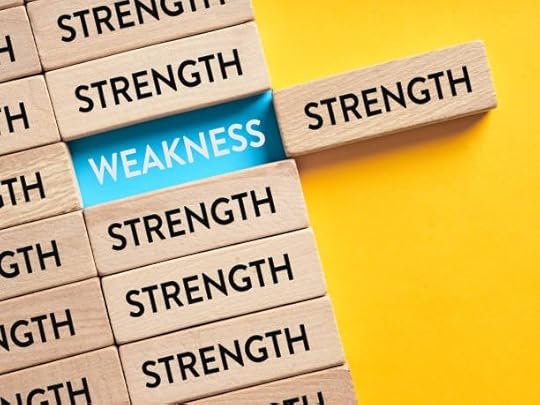Truly Understanding C-game

As you think about your goals for this year, it’s a great time to remind yourself about the realities of C-game.
Do you have a good estimation of the most likely weaknesses that could derail your ability to accomplish those goals? If the answer is no, your goals are at risk. This is why I often point out that New Year’s Resolutions are stupid – they don’t account for the realities of C-game.
C-game is like gravity – it has the power to drag us down and that will always be true. This is why preparation, getting the right sleep, eating well, and all the things we do to have good energy are simply the minimum requirements to escape C-game and earn B-game and A-game.
Remember, everything you do involves some learning.
Your C-game is what you have learned so well that no matter what is happening, it’s achievable. That’s why you have to earn B-game and A-game. They take more effort. C-game is what you have learned so well, it has reached the level of Unconscious Competence.
By and large, the issues you experience in C-game are not technical or strategic. For the majority of you, the necessary improvements here are much more mental and emotional. So instead of focusing on trying to acquire new skills and knowledge, the best thing you can do is address the underlying issues.
The Work vs. The Reward
It would be nice to not have to concern ourselves with these un-fun pain points, but that’s just not reality. Plus, when I look at the people who have had the most success using my coaching and books, that success has generally come after they fully accept that they can’t will or wish their way to reaching the level they want. They have to do the work to eliminate weaknesses.
I like to compare it to going to the gym. Most people aren’t excited about their gym workout and often want to quit in the middle of a set or class, find it hard to even get there, or are feeling banged up and struggling to perform. It’s just not that fun.
What people do enjoy, however, is the outcome. Maybe you’ve increased your strength, improved your balance, enabled yourself to play better golf or soccer, or have better posture and are in less pain. You like what the gym does for you, but the work is rarely fun.
In the same way, the work needed to achieve C-game improvement is rarely fun and this can be compounded by isolation, which is an ongoing concern in trading. Regardless of where you are, the starting point is always the same – actually figuring out where you are.
(Side note: If you want to feel less isolated in your work check out The Mental Game of Trading LIVE . Members are often seeing tangible benefit from simply engaging with others who are going through this process. It’s like a group workout. You’re not absolved of responsibility, but it feels easier when you see someone else’s challenges and that they are struggling too.)
Understanding Your C-Game
The beginning step is gathering data about your C-game. This can involve comprehensive tracking or simple journaling. But recording is essential, especially capturing what is going on when you are at your worst. Writing when you are at your worst is actually one the best things you can do in the moment because that knowledge will help you later.
Fun fact – clients will often email me a wall of text after having a big blow up or hitting rock bottom. Typically, however, I don’t respond for at least a day or two because I almost always receive a follow-up email saying that they feel better and the crisis has been averted. The act of writing the email allowed them to get the emotion out, see what they were dealing with, and have their problem-solving skills kick in.
The point is, if you are truly going to understand your C-game, you need to take advantage of those instances when you are at your worst and write down what’s happening.
If you are new to my system, start here. Begin observing and tracking when emotions get the best of you.
For those of you already familiar with the system, it’s time to recognize and celebrate the progress you’ve made so far, then make a fresh evaluation to target your current C-game.
You don’t need to rediscover your C-game every day, but when you have a reset moment, such as setting annual goals, you need to acknowledge that those goals can be torn apart by your C-game and get prepared.
One example would be fully expecting 2025 to be even better than 2024, which is subtle overconfidence. Maybe you are going through the motions of a plan, but if the vibe you are bringing is just that you expect a better outcome without specific risks identified and plans to address them, that’s a C-game mistake.
It’s also important to acknowledge that old stuff can be a factor. When you just continually get tripped up again and again and again, it can feel like you are sabotaging your own efforts, which adds self-criticism and can cost you confidence and motivation.
For those of you who truly feel trapped, like you are in an unrelenting cycle, it could be scar tissue or trauma that is more personal, and not related to trading, golf, or poker at all. Your personal C-game is the foundation for your performance C-game and any cracks that exist there can certainly bleed through and make it an unfair fight when you are trying to tackle performance. If that rings true, consider watching this video about identifying and resolving accumulated emotion.
Getting to Work
Now that you have a solid understanding of why C-game matters, it’s time to get to work. Unlocking you from this place is going to come from identifying the flaws, biases, and illusions that are driving your C-game. You’ve got this!
If you’d like my blog delivered right to your inbox, click here to be added to the list.
The post Truly Understanding C-game appeared first on Jared Tendler.



